Spot welding is one of the oldest welding processes, and it is commonly referred to as the resistance spot welding process. In this process, heat, pressure, and electrical resistance fuse two or more metal sheets.
Even though spot welding theoretically seems like a pretty straightforward welding process, there are a series of factors that can affect the weld quality, properties, and appearance.
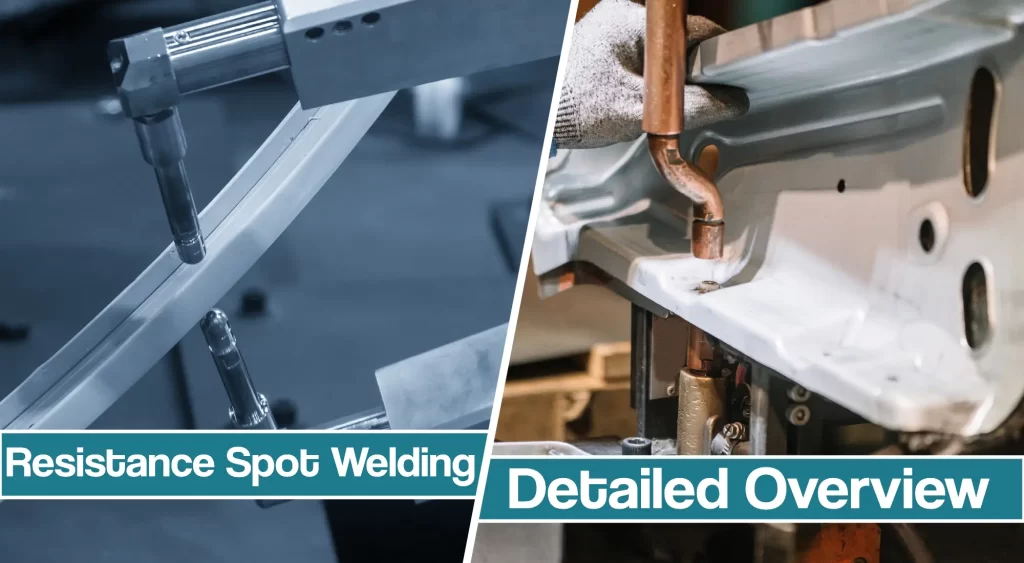
So let’s take a look at what spot welding is, how it works, and where it is used. In the end, we will discuss the good and the bad of it.
What is Spot Welding, and How Does it Work?
Spot welding is a resistance welding process that is used primarily for welding two or more metal sheets. To fuse the materials, pressure, and heat from an electric current are applied to the weld area. Pressure and heat are applied by copper alloy electrodes which induce current due to the electrical resistance of the metals such as low carbon steel.
The name spot welding originates from a tiny dot that forms at the place of the weld. The dot initially looks like a spot, but the weld created between the copper electrodes is sometimes called a nugget.
Over the years, spot welding found its place in various industries. However, the auto body manufacturing industry found the merits of resistance spot welding quite useful. Nonetheless, let’s take a look at how does it work.
How Does the Resistance Spot Welding Work?
Spot welding occurs in three basic steps: alignment, applying pressure, and actual welding.
- Prior to welding, you will first have to align the sheets perfectly. Then, to avoid distortion and wrapping, you will have to align them to the spot weld correctly. Keep in mind that sheet metal is almost impossible to separate once welded. Therefore, mistakes can occur, and the best practice is to start over rather than reuse the materials.
- Next, you will have to match your electrode to the metal you are about to weld and apply pressure. Copper electrodes are the most common and all-around choice for various materials. However, in specific applications, you will have to use tungsten-copper, tungsten, or molybdenum electrodes. When dealing with low carbon steel, copper-chromium and copper-chromium-zirconium electrodes are viable choices. Once you match the composition of the electrode to the welded material, you should apply pressure. Keep in mind that the higher the pressure is, the more heat is generated. Therefore, you should make sure not to compromise the quality of the weld.
- Finally, it is time to flip on the switch and apply an electrical current. Electrical current will flow through electrodes that offer excellent thermal conductivity, and the heat is produced in the area of contact between the electrode and the weld. The amount of heat depends on the thermal conductivity and electrical resistance of the metal and the amount of time the current is applied. You can use the equation: Q = I2RtIn this equation, “Q” is heat energy, “I” is current, “R” is electrical resistance, and “t” is the time for which the current is applied.
What Affects the Results of Spot Weld?
By reading the last part of the text, you can conclude that the principles of resistance spot welding are pretty straightforward. However, several factors can affect the spot weld: the force applied by electrodes, time spent between using the force and welding, welding time, and resting time.
Prior to welding, it is essential to check that the welding conditions are not excessive and that the electrode material is correct for the job.
Force Applied By Electrodes
As you already know, to start spot welding, you will have to apply force to the sheet metal you are about to weld.
However, many wonder how to determine an adequate force. Keep in mind that the stronger the applied force, the lower the electrical resistance of the materials is.
So if your projects include higher force, you will have to provide a higher welding current.
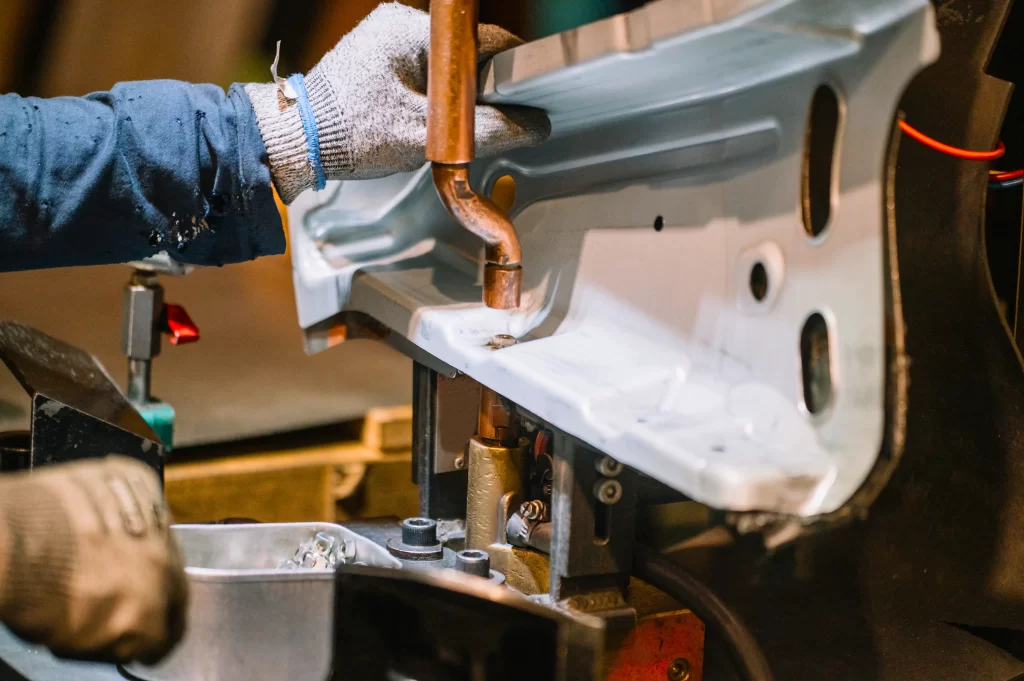
For example, high pressure will result in a small spot whit reduced penetration power. Therefore, you should ensure that the force is suitable for the welded material.
Squeeze Time
Squeeze Time is the time interval between the initial application of the electrode force on the work and the first application of current. You will have to delay the start of the current to attain the proper electrode force. Failing to initialize the squeeze time might result in arching, premature electrode wear, or interfacial expulsion.
While introducing squeeze time in the spot welding process is essential and may result in a high-quality weld, too much delay is not helpful. There is only a certain amount of time required, and if you exceed the limitations, the performances are not getting any better, and you are just wasting time. In addition, wasting time needed to weld can result in higher expenses.
Time Spent Welding
After the squeezing period is over, a current is finally applied. Welding time denotes the period from starting the current until the end of the process. Unfortunately, welding time can be hard to determine, and it is usually computed using line voltage cycles.
There are many different factors when determining the weld time. However, you should always try to make it as short as possible to prevent the distortion, burn through and wear of electrodes.
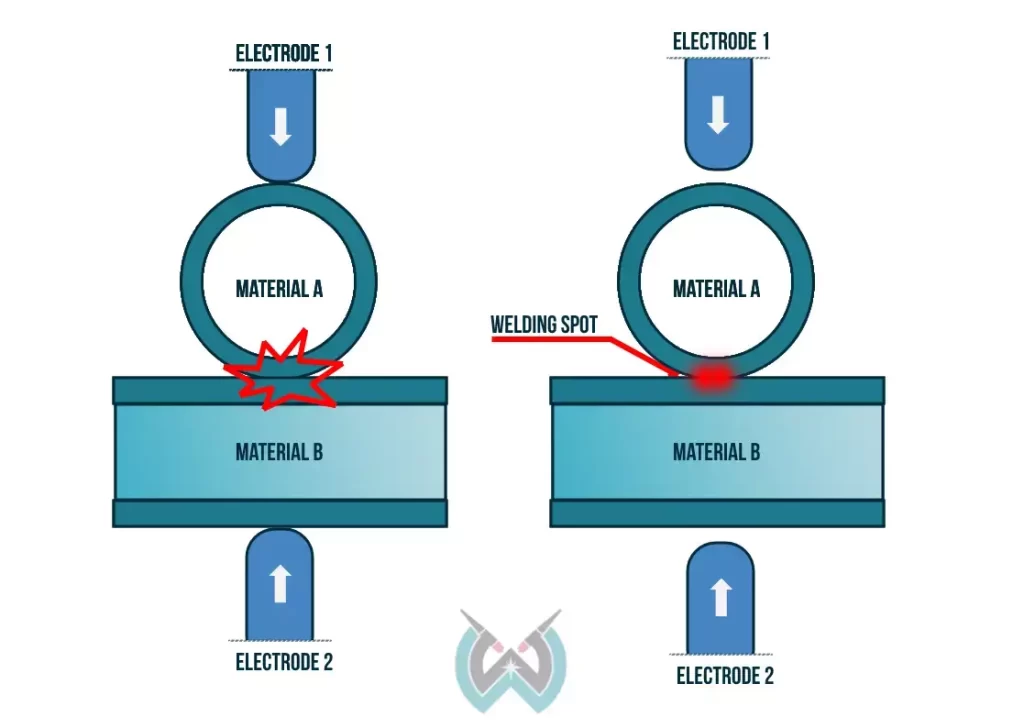
Spot welding thick sheets should result in a broader nugget, and if your spot welder is not capable enough, you should increase the weld time. Meanwhile, when welding thin metals, you should divide the weld time into a number of impulses to prevent the heat energy from growing.
Cooling Time
Like any other welding method, spot welding requires cooling, often referred to as holding time. Holding time occurs once you stop the current, but the pressure is still applied.
The electrodes conduct excess heat after the welding, letting the materials solidify without any defects. However, the holding time shouldn’t be too long, as the excess heat can damage the electrodes.
In addition, when dealing with low carbon steel, extended cooling time can result in brittle welds. Therefore, you should let the weld cool but not overdo it.
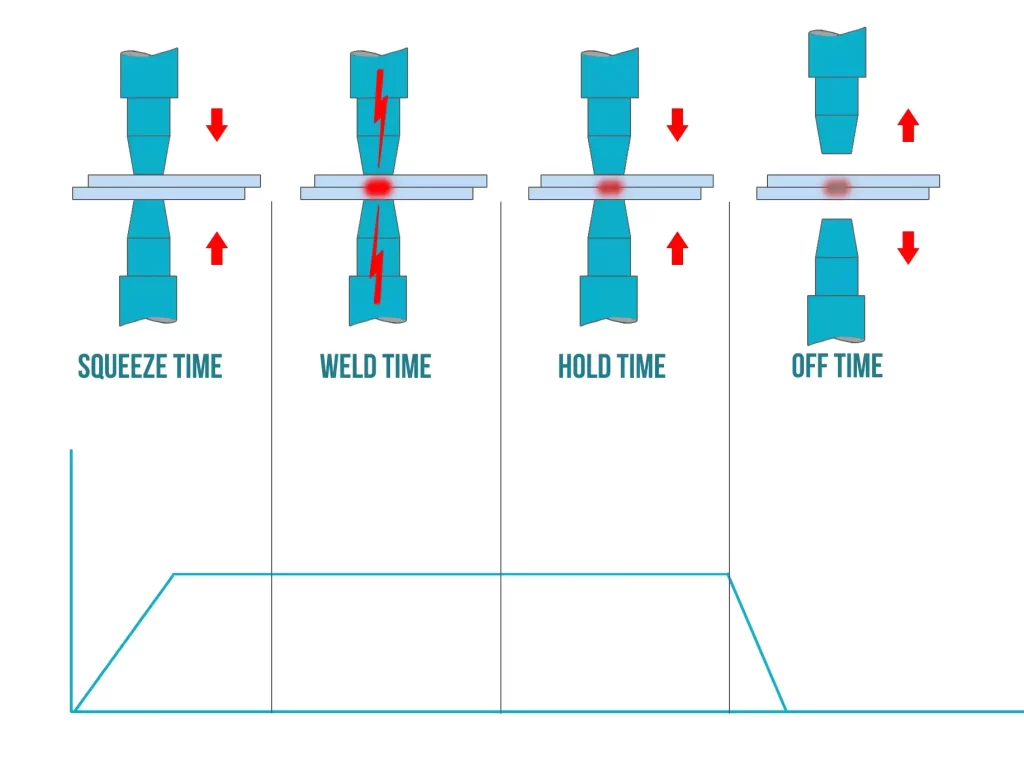
Weldable Materials
The versatility of the spot welding process allows it to weld nearly all electrically conductive materials, but you will have to change the methods and approaches.
Due to high electrical resistance and low thermal conductivity;
- Mild steel might be one of the best spot welding materials. However, once the carbon content increases, the risk of brittle microstructure rises. Therefore, special post-weld treatment is required. In addition to low-carbon steels, nickel alloys and titanium are also popular choices.
- Galvanized steel can also be joined using the spot welding process, but it requires higher currents. In addition, zinc alloys can damage the electrodes, so you should make sure you use a cutter.
- Stainless steel is vulnerable to concentrated and high heat sources. Therefore certain precautions are required. Spot welding stainless steel can be challenging, but it is doable.
- Aluminum offers excellent heat and electricity conduction; therefore, it is one of the most challenging materials to spot weld. High thermal conductivity means low electrical resistance, so the heat rapidly dissipates away from the weld.
To spot weld aluminum, you will need a welder capable of outputting above-average amperage. In addition, your spot welder should have a capacitor system that discharges a significant amount of power instantly. Spot welding aluminum alloy degrades and wares electrodes. Therefore it is not recommended for heavy-duty and mass production, but it is still capable.
- Copper Spot welding is also possible, but the issue is that most common spot welding electrodes are actually made of copper. So to weld it, you will have to use molybdenum and tungsten electrodes due to high electrical resistance and melting point.
Spot Welding Application
Thanks to the ability to weld nearly all conductive materials, spot welding is widely used in many industries and has many applications. For example, it found its way into manufacturing gas sensors, solar panels, switches, high voltage cables, and circuit boards.
However, spot welding is one of the prevalent methods in the automotive industry. Why? Because it is cost-efficient and works excellent with metal sheets.
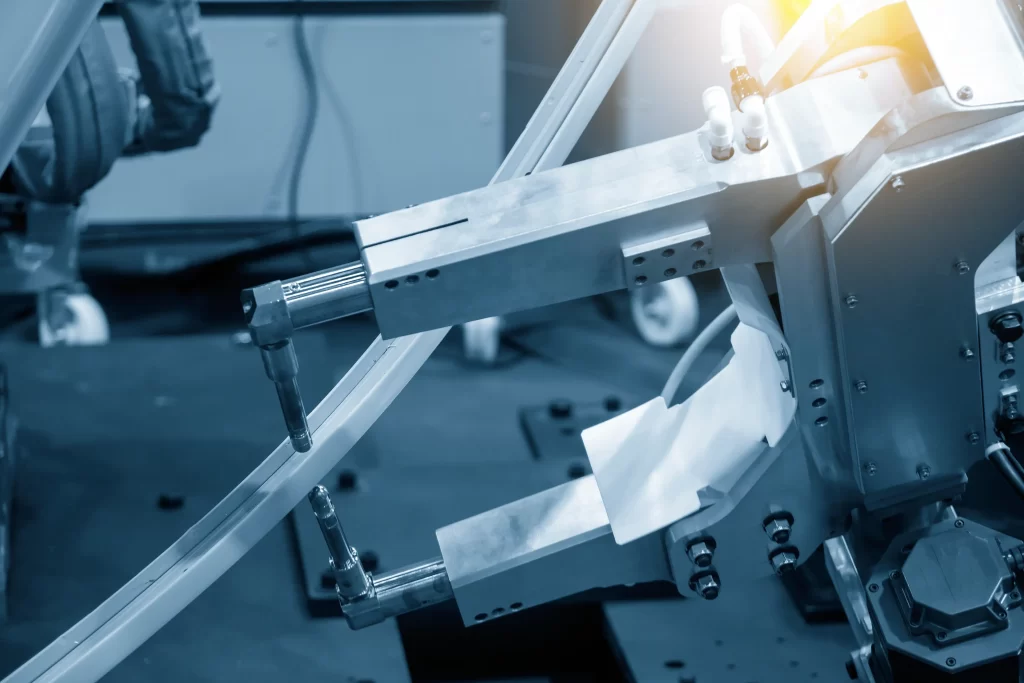
Thus, spot welding robots in high-volume manufacturing lines can achieve tremendous productivity with significantly lower costs compared to advanced methods.
Resistance spot welding is also used in industries like aerospace, rail, manufacturing, electronics, construction, battery, and others. For example, spot welding straps to nickel-metal hydride, lithium-ion batteries, or nickel-cadmium cells is highly recommended due to high electrical resistance. The method can also be used to heat or repair orthodontic materials in dental labs.
Pros and Cons
Just like any other welding methods, spot welding has its ups and downs. So let’s see where it thrives and where it comes short.
Advantages:
- Versatility: you can use spot welding to join any conductive metal such as mild steel, nickel alloys, titanium, but also aluminum, stainless steel, or galvanized steel
- Efficiency: when hooked into a power supply, spot welders utilize much less power than MIG or TIG welding machines to produce high-strength welds. In addition, spot welding is faster than some processes
- Easy to use: spot welding is easy to use and master, so it takes less time to train personnel
- Thin metal welding: resistance spot welding produces the highest quality welds when dealing with sheet metal compared to other methods
- Satisfactory results: spot weld creates controlled repeatable welds each time
- Cheap: relatively cheap to operate and automate leading to excellent productivity
Drawbacks:
- Requires space: working in confined spaces can be hard, especially when another side of the material is not accessible
- Material thickness limitations: spot welding is not so efficient when dealing with thicker material and is best with metals 3 mm to 12.5 mm thick. Weld strength is significantly lower when it comes to thick materials
- Voltage fluctuations: spot welder can output extremely high amps, but it works with 1-20V, so fluctuations can affect the weld quality
- Hazardous: even though there are no high amounts of radiation, sparks, fumes, and heat can injure the operator
Sources:
- https://www.millerwelds.com/-/media/miller-electric/files/pdf/resources/resistance.pdf
- https://www.twi-global.com/technical-knowledge/faqs/what-is-spot-welding
- https://www.hunker.com/12168656/how-does-spot-welding-work
- https://www.sciencedirect.com/topics/engineering/spot-welding
- https://mechanicalenotes.com/resistance-spot-welding/





